In Conversation with
Gustavo Peña
In Conversation with
Gustavo Peña
We had a chance to talk to the amazingly talented painter about his latest collection, his inspirations, his technique, his creative process and his ongoing trajectory as an artist.
Gustavo Peña
A couple months ago, a good friend of mine showed me a painting he’d been obsessed with for a while. The painting was geometric, and minimalistic in the sense that it consisted mostly of shapes and backgrounds. I was immediately impressed. The painting itself was a contradiction. While the subject matter did look very minimalist at first glance, upon further inspection you could see the intricate textures of the paint, as well as the variety of techniques applied to achieve the backgrounds of each shape. I asked my friend who the painter was, and that was when I first heard of Gustavo Peña.
Gustavo Peña (@notaniceboy) is a Dominican painter. Over the years, Gustavo has experimented with a wide array of techniques, styles and inspirations. Although his earlier work consisted mostly of portraiture, Gustavo’s desire to think outside the box and leave his comfort zone has led him to develop many styles, all of which are immediately recognizable. Gustavo’s main driving force is his need for experimentation, which leads him to constantly explore new methods of achieving his vision for his paintings. This is something that is evident as soon as one sees the progression of his work over the years, which also seeps into his evolution as an artist.
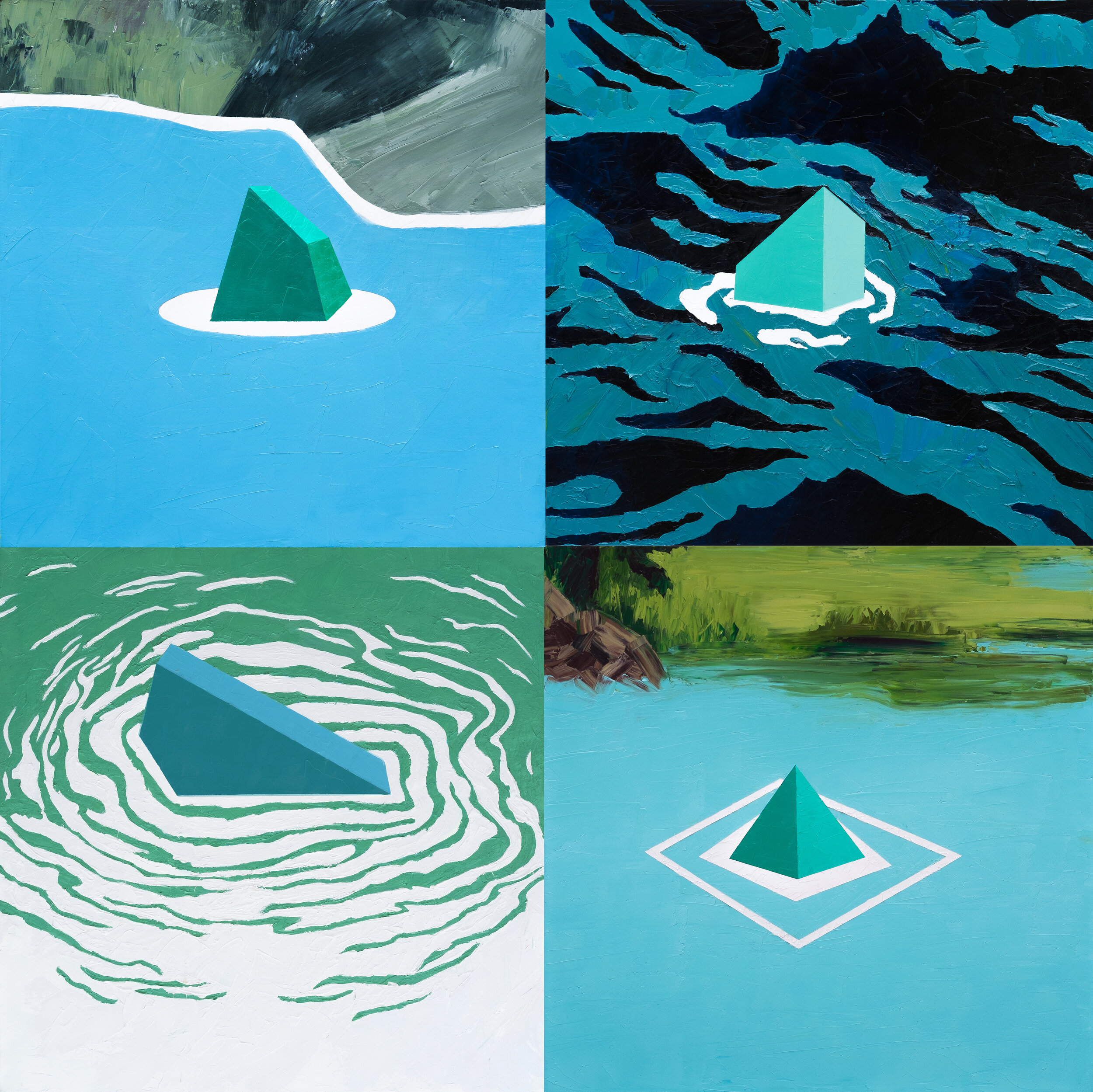
“Floating Geometry” 2020, Polyptych. Oil on Canvas.
30 x 30” each.

“Desk III (Artifacts)” 2020, Oil on MDF.
48 x 48”
I had the chance to have an amazing conversation with Gustavo about everything from his creative process, to his inspirations and evolution as a painter. This is what he had to say:
First of all, let’s talk a little bit about your first forays into art. Is art something that has always been present in your life, or is it more of an interest that developed as you grew older?
Ever since I was a kid, I always drew, but nothing too serious. My first adult passion was photography, but because there were no available bachelor’s in it, I decided to enroll in art school instead.
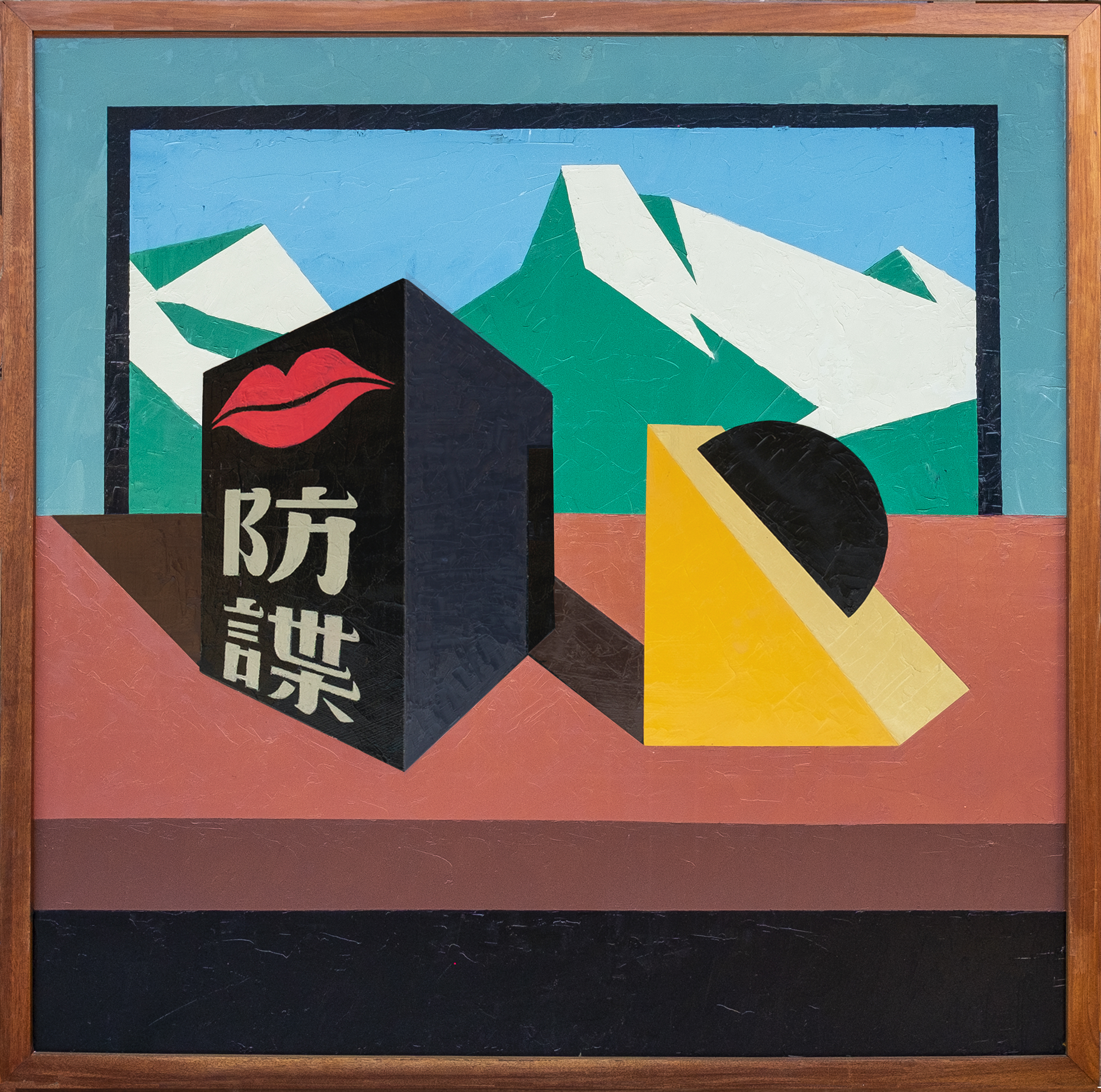
“Desk II (Artifacts)” 2020, Oil on MDF.
48 x 48”
Let’s talk about your creative process. Do you feel the process you choose to employ depends on the idea you have for the final product, or is it the process you decide to use that defines what type of piece you will create?
The creative process I use will largely depend on “the experiment” I’m undertaking at the moment. For certain periods, I’ve worked exclusively on a natural format, or exclusively in a digital format, for example. Normally, though, most of my works consist of a thorough investigation, models, photography, digital design and oil paints. The process I use is almost always a combination of some technique or style that has caught my attention, and the materials and formats that I want to use.
“The creative process I use will largely depend on “the
experiment”
I’m undertaking at the moment.”
I’m undertaking at the moment.”

“A Necessary Risk II” 2020, Oil on MDF.
48 x 48”
Something that is really interesting to me about your work is the way you experiment with a whole arrange of different techniques. For example, in “A Necessary Risk” you used the palette knife to apply the paint throughout the whole collection. Do you consider this experimentation necessary in order to grow as an artist?
To me, experimentation is very important, but it also has a high cost in time and resources. However, to me it is what gives a purpose to painting. Maybe Woody Allen can answer this better than I can:
“If you’re not failing every now and again, it’s a sign that you’re not doing anything very innovative” – Woody Allen
“To me, the experimentation is very important,
but it also has a high cost in time and resources.”
but it also has a high cost in time and resources.”

“Desk VI (Glitches and Artifacts) 2020, Oil on MDF.
48 x 48”
48 x 48”
When we first spoke, you mentioned the influence that 80’s videogames and the 8-bit aesthetic had in your paintings. This made me think about the feeling of nostalgia that this aesthetic could cause in you. Do you think the 8-bit influence comes from a nostalgic place, or is it interesting to you for a different reason?
I think it is simply my background as a human. I was raised in a time where videogames and computers were having their first boom. All of this sort of carved itself into my memory, and that whole aesthetic comes naturally as a result.
“I think it is simply my background as a human.
I was raised in a time where videogames and computers
were having their first boom.”
I was raised in a time where videogames and computers
were having their first boom.”
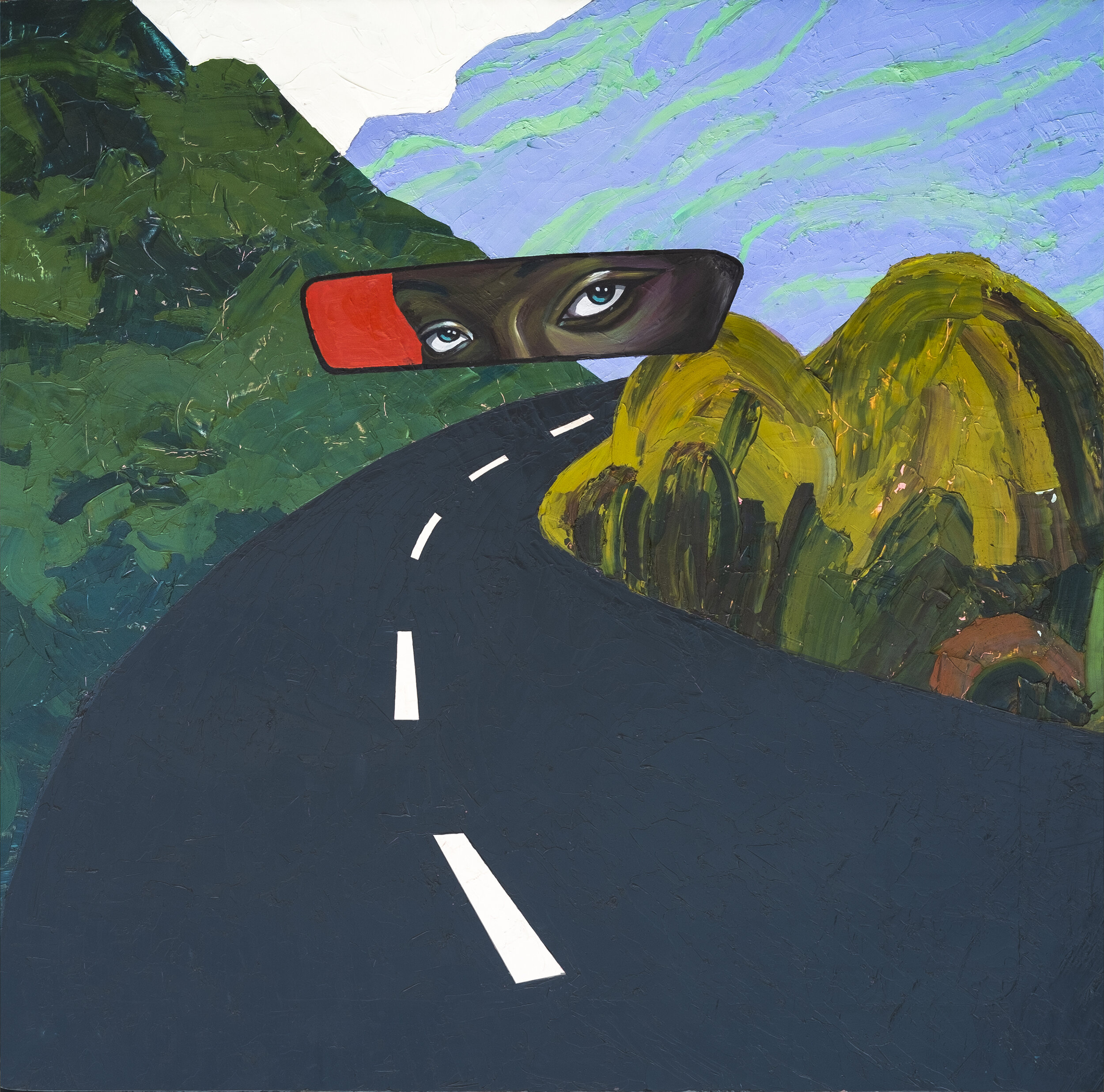
“A Necessary Risk I” 2020, Oil on MDF.
48 x 48”
As your career as a painter has advanced, you’ve painted in a lot of different styles, from portraits to your most recent work in geometric abstraction, like in “A Necessary Risk”. Do you feel more identified or comfortable with any style in particular, or do you consider each style as an equal part of your trajectory as an artist?
I feel like my stylistic changes are a natural progression of events; each one has served a function in my personal search for narrative and aesthetics. From each style, I inherited some sort of strategy. In the end it’s all resources and techniques that add themselves to my repertoire, and even though sometimes I may abandon one or another for some time, I often end up returning to them eventually.
“From each style, I inherited some sort of strategy.
In the end it’s all resources and techniques that
add themselves to my repertoire.“
In the end it’s all resources and techniques that
add themselves to my repertoire.“
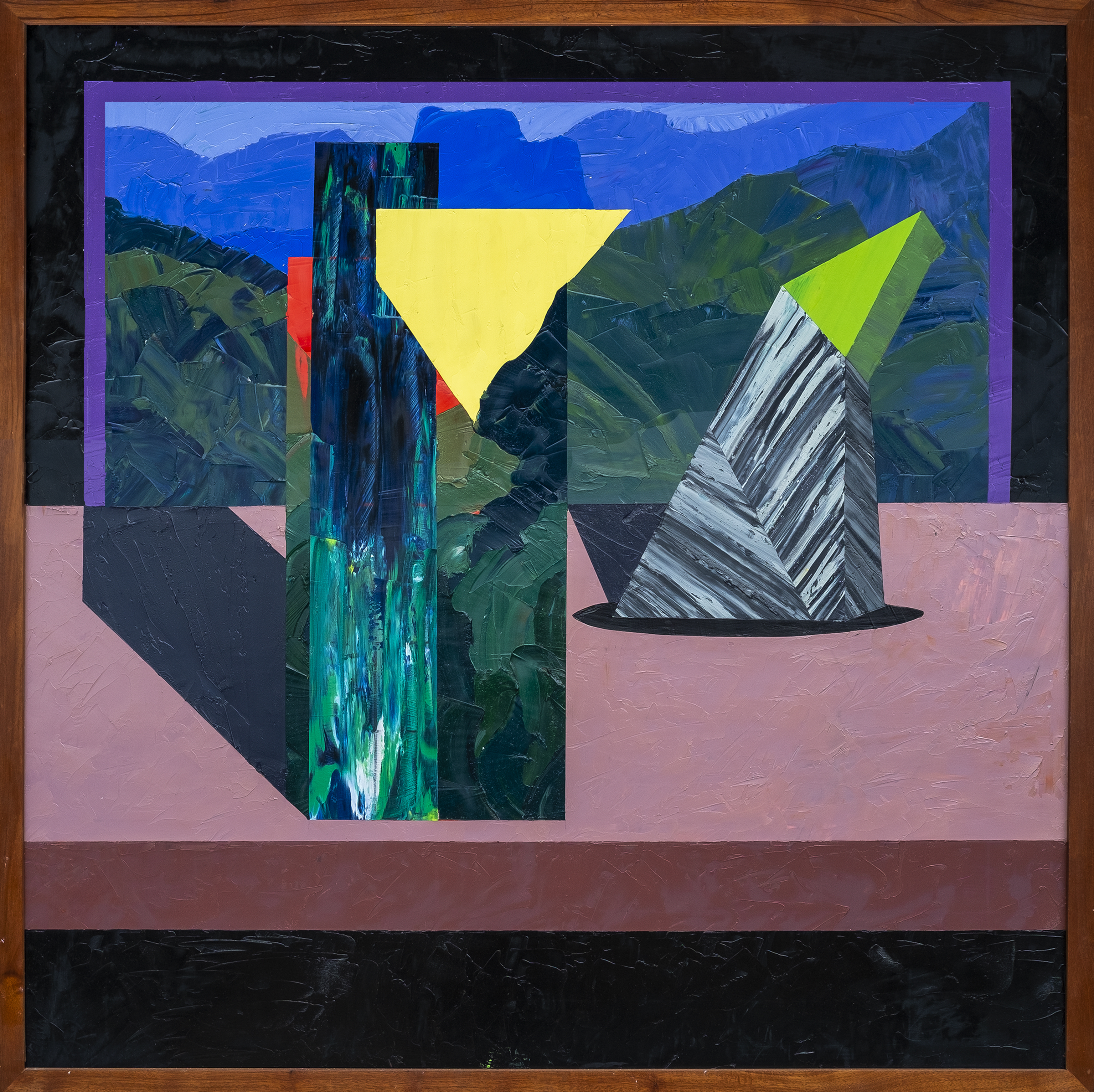
“Desk IV (Glitches and Artifacts) 2020, Oil on MDF.
48 x 48”
When we had our first conversation, you mentioned the importance of “calligraphy” in painting. Could you elaborate a bit on the role of “calligraphy” in your own work? In other words, in what sense does the concept of calligraphy affect the final product of a certain piece or collection?
Calligraphy in painting is nothing more than the ability to achieve different textures in an artwork. Ideally, these textures create tension and a dialogue between them in order to enrich the piece and the experience of the visual journey.
“Ideally, these textures create
tension and
a dialogue between them“
a dialogue between them“

“Desk I (Artifacts)” 2020, Oil on MDF.
48 x 48”
After getting to see “A Necessary Risk” in person, I realized that many of your paintings share a series of graphic elements. When you paint similar paintings, do you do it with the intention of creating coherence between the pieces, or is it more attributed to your desire of wanting to explore a specific element or technique?
I think you may be referring to the concept of modularity that I’ve been working with, and I believe that, at least recently, it’s become an intrinsic part of my work. I’ve started conceptualizing my works in this way because it provides me with lots of advantages. One advantage is the ability to view my pieces as a more “industrial” product, more serialized. Another advantage is that the museography looks cleaner and more organized. It’s like thinking of a collection as an experience made up of all the works together instead of just the individual effects of each painting. One last advantage is that collectors now have the option to buy more than two paintings and connect them themselves. Doing this allows my audience to create their own diptych, triptych or polyptych. This makes the pieces way more interactive as the audience and collectors have, to a certain degree, a creative role at the moment of choosing the pieces.
“I think you may be referring to the concept of modularity that I’ve
been working with, and I believe that, at least recently, it’s become an
intrinsic part of my work. I’ve started conceptualizing my works in this way because
it provides me with lots of advantages.”

“Minimal Graphics” 2020, Oil on MDF.
24 x 24” each
24 x 24” each
Now that you’ve been working as a painter for a good amount of time, do you have any advice for painters who are just now starting their careers and trying to find a style they identify with?
Yes, of course. I guess the best advice I can really give is to focus on technique, the command of figuration, landscape and painting naturally. Read lots of books and paint often, everything else will come on its own.
“Read lots of books and paint often, everything else will
come on its own.”
come on its own.”

"Desk V (Glitches and Artifacts)" 2020, Oil on MDF.
48 x 48"
48 x 48"
Finally, is there any artist, from any given medium or discipline, that you feel everybody should know? If so, who would that be?
There are tons of amazing painters, too many select a few to mention. The first that come to mind, however, are David Hockney, Lucian Freud, Francis Bacon, Dalton Gata and Hulda Guzmán.
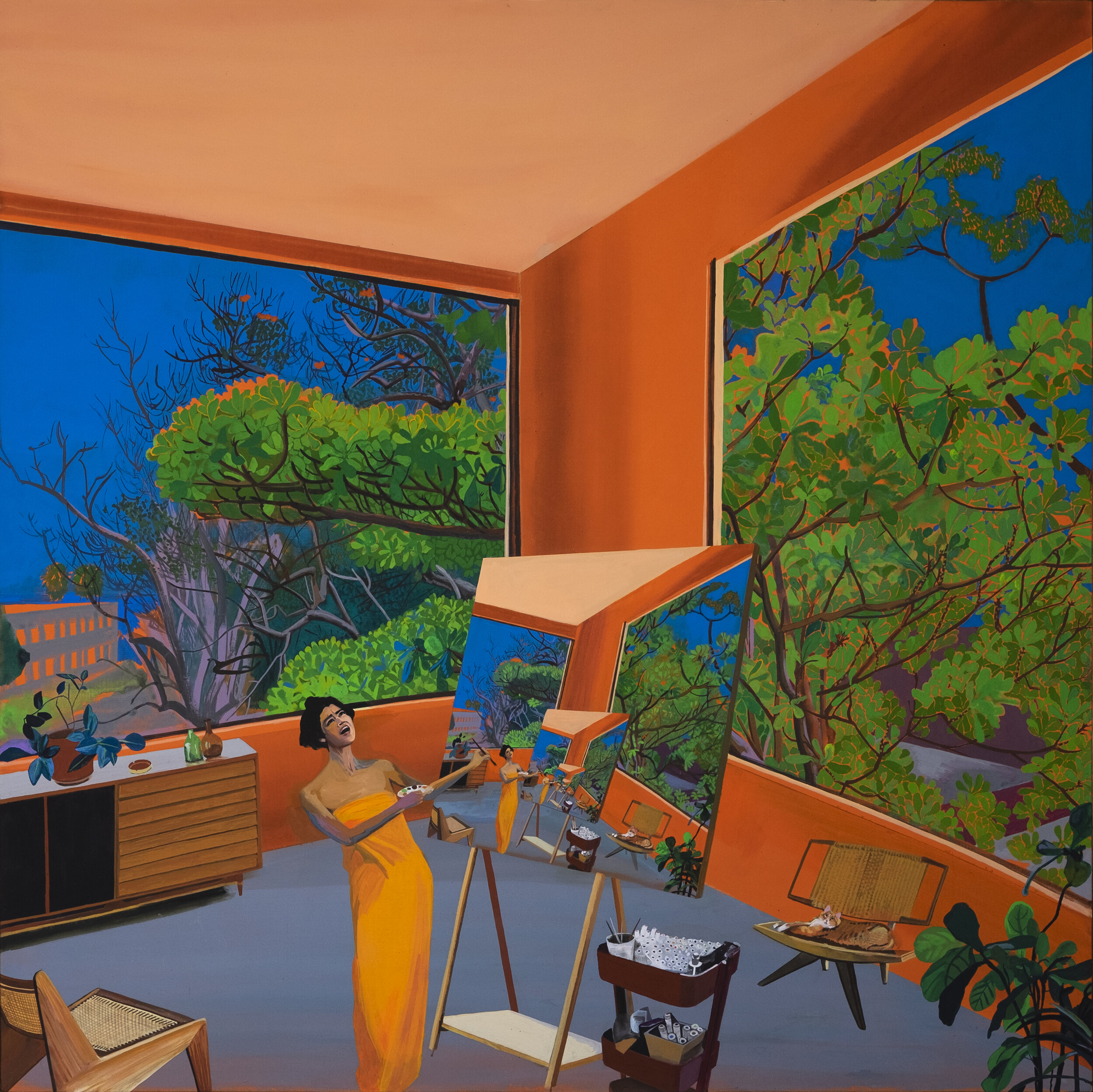
“Pintando la Almendra” by Hulda Guzmán.
2021, Acrylic Gouche on Linen.
45 x 45”
We’d like to give a special thanks to Gustavo for taking the
time to talk to us and answer our questions. For more
on Gustavo, be sure to visit
his Instagram at @notaniceboy and check out his portfolio
for a more in-depth look at his work.